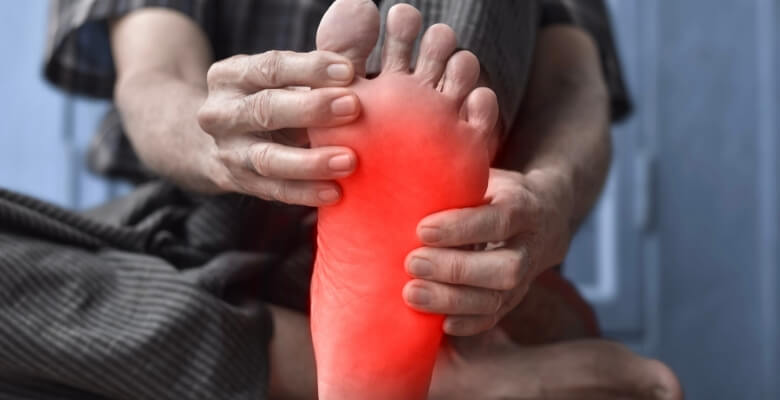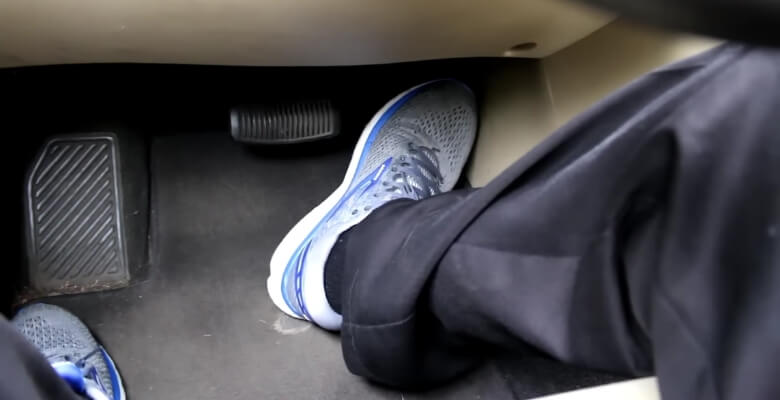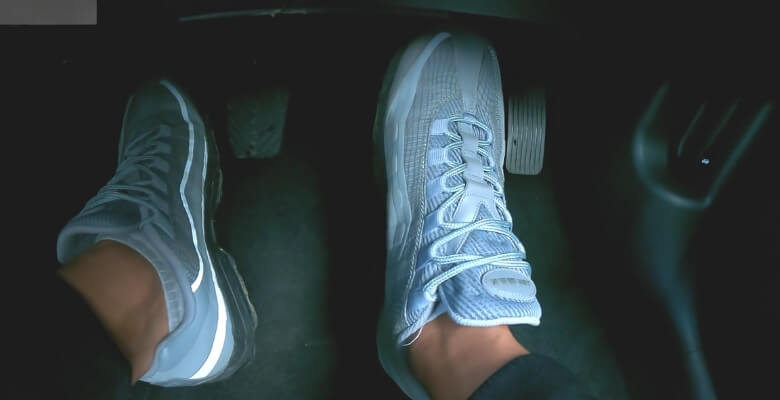My-Happy Feet Socks are the perfect companion for comfortable journeys behind the wheel. During long drives, foot pain can disrupt your trip. This is where these socks come in, providing cushioned support and breathability. Now let’s move on to the topic at hand: How to Avoid Foot Pain While Driving?
To avoid foot pain while driving, ensure proper foot positioning, wear comfortable shoes, take regular breaks to stretch, and adjust your car’s seat and pedals for ergonomic support. Incorporating these simple adjustments can significantly reduce discomfort during long journeys behind the wheel.
Would you like to know more about how to keep your feet happy while driving? Please continue reading!
What is Foot Pain?
Foot pain refers to any discomfort or soreness experienced in the foot, ranging from mild discomfort to severe agony. It can affect any part of the foot, including the toes, arch, heel, and sole. Foot pain can stem from various causes, such as injury, overuse, improper footwear, or underlying medical conditions.

At The Gadgetians, we understand the importance of foot health and comfort. That’s why we offer products like My-Happy Feet socks designed to keep your feet healthy and happy. These socks provide support, cushioning, and moisture-wicking properties to prevent foot pain and promote overall foot wellness.
It’s important to address the underlying cause and alleviate symptoms of occasional discomfort or chronic foot pain. Keeping your feet pain-free and feeling their best involves wearing supportive footwear, practicing proper foot care, and using My-Happy-Feet socks.
Why Does Foot Pain Happen While Driving?
The act of driving is often an essential part of our daily routine, but it can also cause foot pain for many people. You can make your driving experience more enjoyable by understanding the reasons behind this discomfort.

Prolonged Pressure on the Pedals
When you drive for long periods, your foot remains in a fixed position, exerting pressure on the pedals. This prolonged pressure can cause strain and discomfort, leading to foot pain during or after driving.
Poor Foot Positioning
Incorrect foot positioning, such as keeping the foot at an awkward angle or resting it too heavily on the pedals, can contribute to foot pain while driving. Maintaining proper posture and adjusting your seat and pedals can help alleviate this issue.
Inadequate Foot Support
Lack of adequate foot support, especially if your car’s pedals are poorly designed or if you’re not wearing supportive footwear, can exacerbate foot pain while driving. Investing in shoes with proper arch support or using cushioned inserts can provide additional comfort and support.
Repetitive Movements
The repetitive motion of pressing the pedals while driving can lead to overuse injuries, such as tendonitis or plantar fasciitis, resulting in foot pain. Taking breaks during long drives to stretch and flex your feet can help prevent these issues.
Driving Stress and Tension
Stress and tension while driving can cause your muscles to tighten, leading to discomfort and pain in your feet. Practicing relaxation techniques, such as deep breathing or listening to calming music, can help reduce stress and alleviate foot pain.
Underlying Medical Conditions
Certain underlying medical conditions, such as arthritis or neuropathy, can make you more susceptible to foot pain while driving. Consulting with a healthcare professional and following their recommendations for managing your condition can help mitigate discomfort.
How to Avoid Foot Pain While Driving?
Do you want your driving experience to be more comfortable? Are you wondering about how to avoid foot pain while driving? You can avoid foot pain on the road by following these simple steps.

Step 1: Adjust Your Seat and Pedals
Start by adjusting your seat and pedals to ensure proper positioning. Your knees should be slightly bent, and your feet should comfortably reach the pedals without stretching.
Step 2: Wear Supportive Footwear
For comfort and stability while driving, choose the right shoes and socks like My-Happy Feet Socks that provide adequate arch support and cushioning. Avoid high heels or shoes with narrow toe boxes that can restrict movement.
Step 3: Take Regular Breaks
Schedule breaks during long drives to stretch and flex your feet. Get out of the car, walk around, and perform simple foot exercises to relieve tension and promote circulation.
Step 4: Practice Proper Posture
Maintain good posture while driving by sitting upright with your back against the seat and your shoulders relaxed. Avoid slouching or leaning forward, which can strain your back and feet.
Step 5: Use Cushioned Inserts
Consider using cushioned inserts or foot pads to provide extra support and alleviate pressure on your feet. These inserts can help distribute weight evenly and reduce discomfort while driving.
Step 6: Stay Hydrated
Drink plenty of water before and during your drive to prevent dehydration, which can exacerbate muscle stiffness and cramping in your feet. Staying hydrated helps maintain optimal circulation and muscle function.
Step 7: Be Aware of Your Body’s Signals
Pay attention to any signs of discomfort or pain in your feet while driving. If you experience discomfort, adjust your position, take breaks, or consider consulting a healthcare professional for further guidance.
Tips for Proper Foot Positioning in Driving
Are you experiencing discomfort while driving? Proper foot positioning can make a significant difference in your driving experience. Follow these tips to ensure optimal foot placement and minimize foot pain.

Adjust Your Seat and Steering Wheel
Start by adjusting your seat and steering wheel to achieve a comfortable driving position. Your knees should be slightly bent, and your feet should easily reach the pedals without stretching or straining. Ensure that you can maintain proper posture with your back against the seat and your hands comfortably on the wheel.
Use the Ball of Your Foot
When pressing the pedals, use the ball of your foot rather than your toes or heels. This allows for better control and reduces the risk of slipping off the pedals. Keep your heel on the floor and pivot from the ankle to apply pressure smoothly.
Avoid Hovering Over the Pedals
Resist the urge to hover your foot over the pedals when not in use. This can lead to fatigue and tension in your feet, increasing the likelihood of discomfort or cramping during long drives. Instead, rest your foot flat on the floor beside the pedals to relax your muscles.
Maintain a Neutral Foot Angle
Keep your feet in a neutral position, neither angled too far upward nor downward, to minimize strain on your ankles and calves. Adjust the seat and pedals as needed to achieve a comfortable angle for your feet. Avoid excessive flexing or pointing of your toes while driving.
Alternate Between Feet
If you’re driving a manual transmission vehicle or facing heavy traffic, consider alternating between your left and right foot for the pedals. This can help distribute the workload and reduce fatigue in one foot, preventing overuse injuries and discomfort.
Take Regular Breaks
Regardless of your foot positioning, taking regular breaks during long drives is essential for preventing stiffness and discomfort. Use rest stops to stretch your legs, walk around, and give your feet a chance to relax and recover before continuing your journey.
Be Attentive to Your Body
Above all, listen to your body and pay attention to any signs of discomfort or pain in your feet while driving. If you experience persistent discomfort, consider consulting a healthcare professional for further evaluation and guidance.
FAQs for How to Avoid Foot Pain While Driving?
Driving can be a comfortable experience, but foot pain can turn it into a nightmare. Here are ten frequently asked questions about avoiding foot pain while driving, along with their answers:
Is It Helpful to Use Cruise Control to Reduce Foot Fatigue?
Yes, using cruise control on highways can reduce the need for constant pedal manipulation, thus alleviating foot fatigue. However, remember to stay attentive and ready to take control if needed.
Are There Specific Shoes Recommended for Driving Long Distances?
Opt for comfortable, supportive shoes with adequate cushioning and a firm grip on the pedals. Avoid high heels, flip-flops, or shoes with narrow-toe boxes that can restrict movement and cause discomfort.
Should I Adjust My Seat Position to Relieve Foot Pain While Driving?
Yes, adjusting your seat position to ensure a proper distance from the pedals and adequate support for your lower back can help reduce foot pain. Experiment with different settings until you find the most comfortable position.
What Exercises Can I Do to Prevent Foot Pain Before a Long Drive?
Stretching exercises like toe curls, ankle circles, and calf stretches can help improve blood circulation and flexibility, reducing the likelihood of foot pain during extended periods of driving.
How Often Should I Take Breaks During a Long Drive to Prevent Foot Pain?
Aim to take breaks every 1-2 hours to stretch your legs, walk around, and give your feet a rest from the repetitive motion of driving. Use these breaks to hydrate and re-energize as well.
Can Using Footrests or Cushions in the Car Help Alleviate Foot Pain?
Yes, using footrests or cushions to support your feet and distribute pressure evenly can reduce strain on your lower limbs, minimizing the risk of developing foot pain during extended drives.
Does Driving Posture Impact Foot Pain?
Yes, maintaining proper posture while driving, including keeping your spine aligned and avoiding slouching or leaning too far forward, can help alleviate foot pain by reducing overall strain on your body.
Should I Seek Medical Advice if I Experience Persistent Foot Pain While Driving?
If foot pain persists despite trying various preventive measures or if it interferes with your ability to drive safely, it’s advisable to consult a healthcare professional. They can diagnose any underlying issues and recommend appropriate treatment options.
Final Thought
The key to enjoying the journey is avoiding foot discomfort while driving. Make sure your seat and pedals are positioned properly, so your feet can reach comfortably without strain.
Choose supportive footwear with adequate cushioning and arch support, and avoid styles that restrict movement. Stretching and flexing your feet regularly can relieve tension and promote circulation. Take care of your body’s signals, stay hydrated, and maintain good posture.
You can significantly reduce discomfort while driving by incorporating these simple adjustments into your routine. How to Avoid Foot Pain While Driving? Foot health and overall comfort are all about proactive measures and mindful driving habits.






